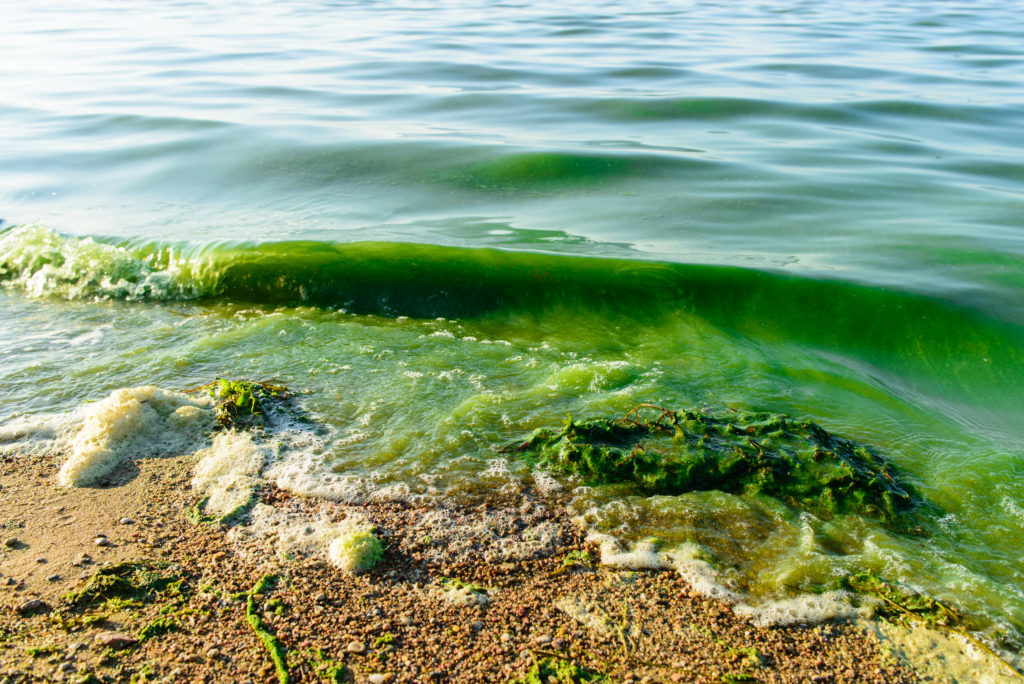
The Slime Monster is Back
An algae bloom descends on Canadian Lake Erie beaches
If you’ve visited a beach along the western Canadian shores of Lake Erie lately, you may have noticed that the water is green, slimy and smelly. What’s the cause? Blue-green algae.
In recent weeks, a toxic algae bloom has extended across the lake—it’s so big that it’s even visible from space. As U.S. National Oceanic and Atmospheric Administration (NOAA)’s satellite images show, the bloom is washing up on Ontario’s northwest coast starting near Harrow, Ont. and going all the way down to Point Pelee.
The worst of the bloom hit Colchester Harbour in the Town of Essex, which forced health officials to close the beach to swimming and made boating close to shore a pretty unpleasant experience. Beaches have also closed on Pelee Island.
The problem with algae
Blue-green algae is more than just a nasty sight. It can also produce toxins harmful to humans and animals. While algae is a normal and essential part of lake ecosystems, too much algae can pollute beaches, clog water intake pipes, kill fish, and put human health at risk. Additionally, exposure to blue-green algae may cause nausea, vomiting, diarrhea, or fever in humans and pets.
Algae grows when there is excessive nitrogen and phosphorous in the lake, which accumulates when rain and snowmelt flush these nutrients into waterways. In the Lake Erie watershed, most of the nutrients come from farms.
Lake Erie needs focused attention and real action. It supports a multi-billion dollar economy and doing nothing could be costly – upwards of $272 million annually. And the ability to swim, fish and boat in clean water is priceless.
Learn more by visiting the website of our sister organization.